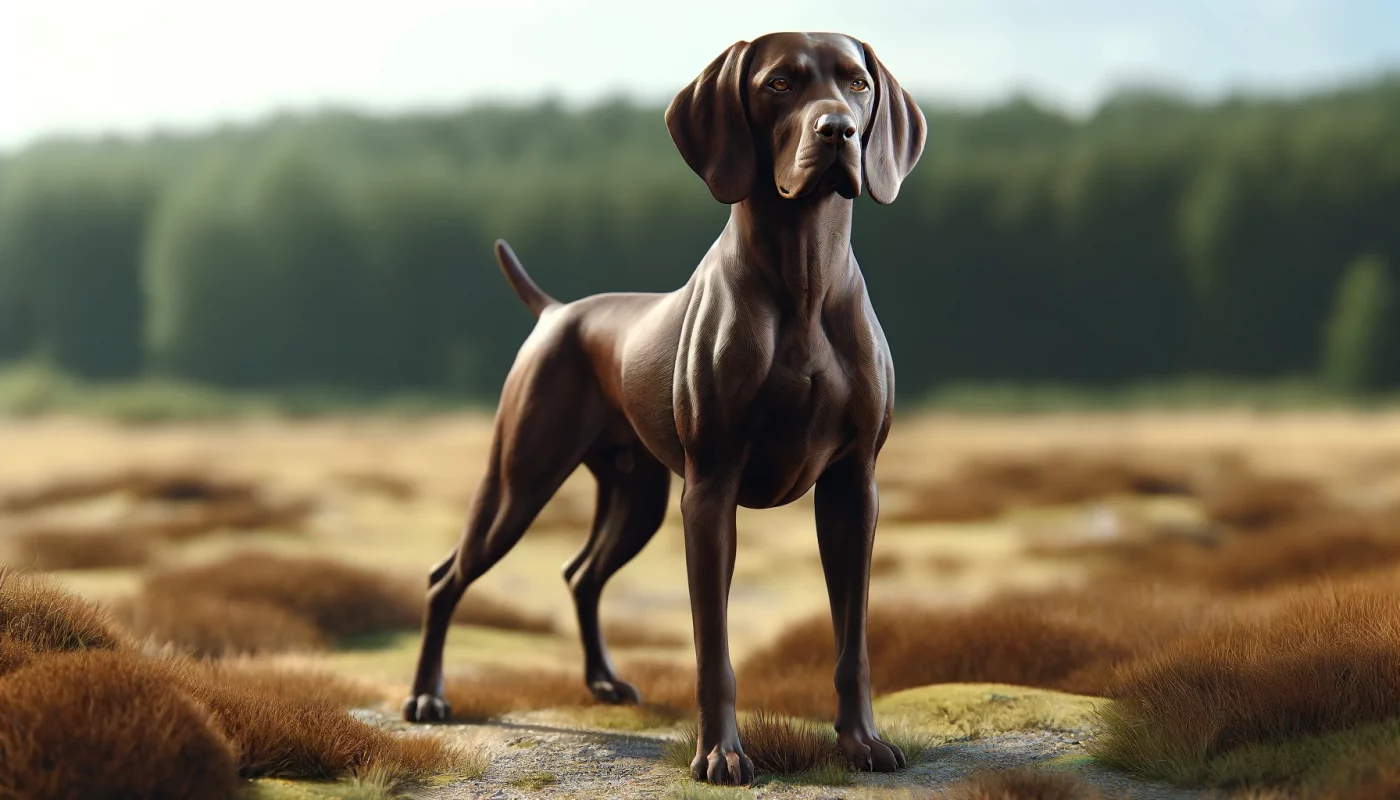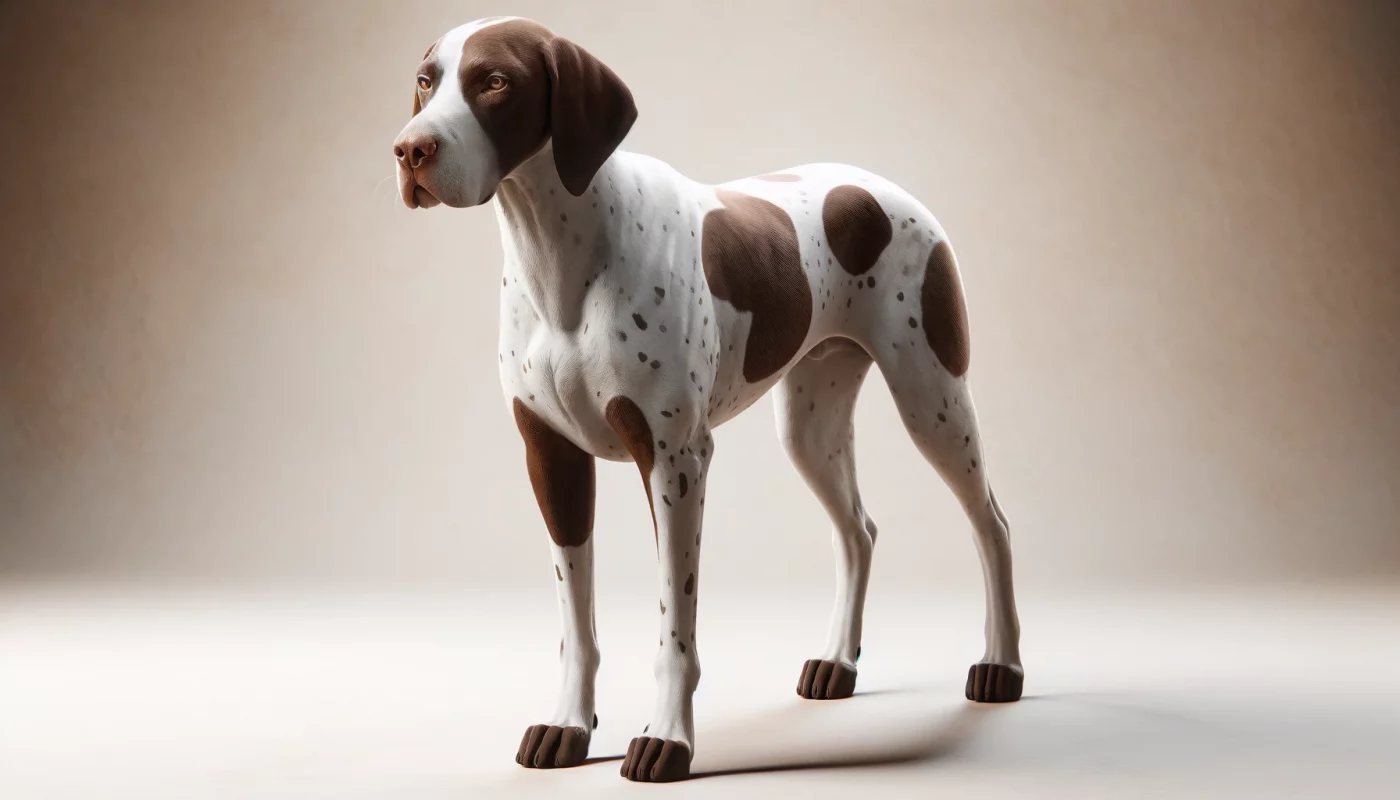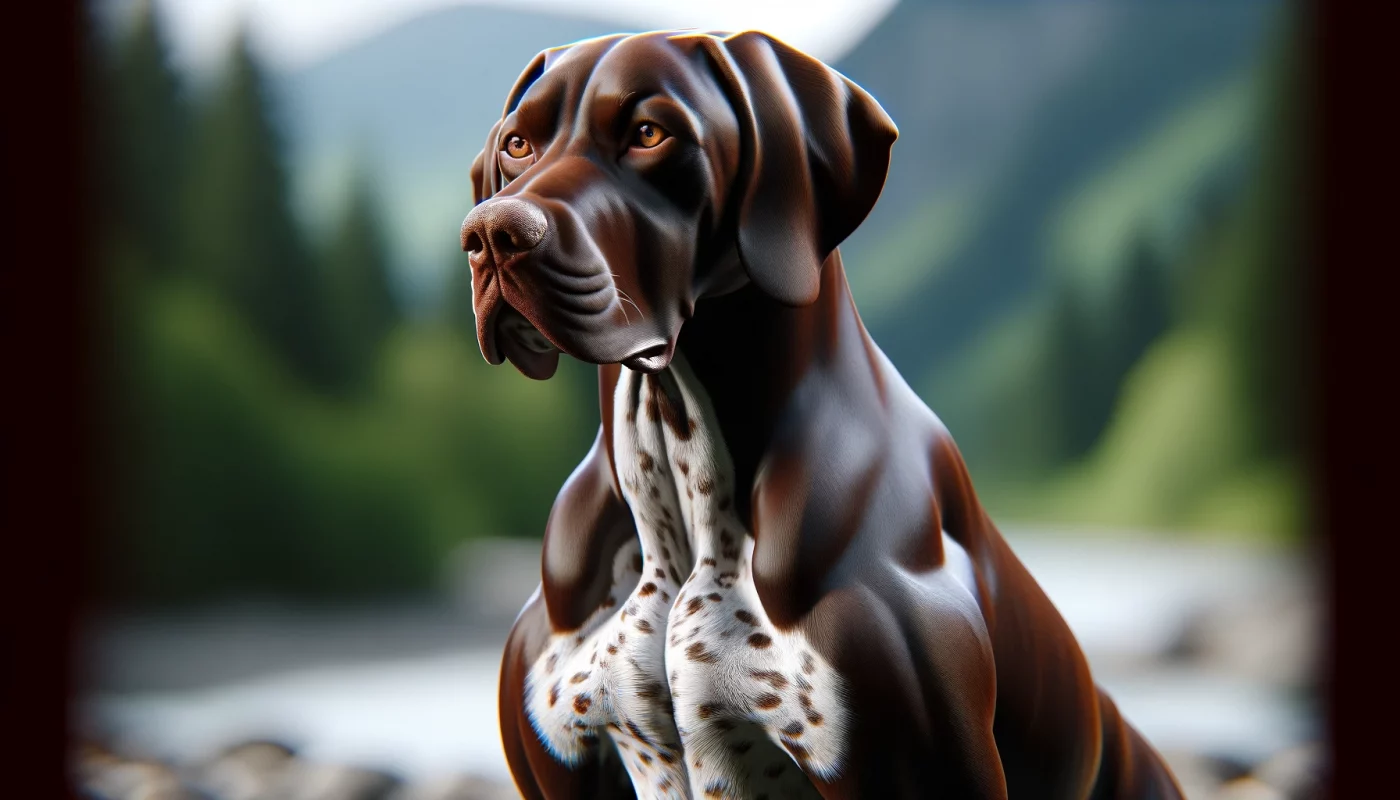German Shorthaired Pointers are a versatile and intelligent breed, renowned for their skills in hunting and their friendly, eager-to-please demeanor. As a sporting breed, their agility and endurance make them excellent companions for active families. However, one of the lesser-known but equally impressive aspects of this breed is the diversity of their coat colors. German Shorthaired Pointers display a range of colors and patterns that are not only beautiful but also functional, providing camouflage in different types of terrain. In this article, we will explore seven stunning color variations of German Shorthaired Pointers, each illustrated with an engaging description to highlight their unique characteristics.
1. Liver

The liver coat color is perhaps the most iconic for the German Shorthaired Pointer. This deep, rich brown color can appear in a solid pattern or mixed with white in ticking or roaning patterns. Liver-colored German Shorthaired Pointers are particularly favored for their traditional and classic look. This color provides excellent camouflage in fall and winter landscapes, making these dogs outstanding hunters in wooded or darker environments. The liver hue not only complements the athletic build of these dogs but also highlights their sleek, glossy coat.
2. Black

While not as common as the liver, black German Shorthaired Pointers are striking in their appearance. They can be solid black or may feature white markings or ticking. Black provides a stark contrast in snowy conditions, making these dogs highly visible to hunters. Moreover, the black coat is sleek and gleaming, enhancing the dog’s muscular contours and elegant stance. The intensity of the black pigment in their fur also tends to make their bright eyes stand out, adding to their expressive faces.
3. White and Liver

The white and liver variation is characterized by a predominantly white base with liver patches and perhaps some ticking. This pattern is highly functional in hunting as it provides excellent camouflage in fields and open terrains. The patches can be large or small, but they are always distinctly set against the white, giving each dog a unique and visually appealing look. This coloration not only serves a practical purpose but also gives the breed a distinctively handsome appearance that is admired both in the field and in the show ring.
4. White and Black

Similar to the white and liver, the white and black German Shorthaired Pointers feature a primary white coat with black patches. This color variation can include ticking, which looks like fine specks of color interspersed within the white. The contrast between the white and black not only makes these dogs visually stunning but also increases their visibility in snowy or bright field conditions. This coat pattern is less common but highly sought after due to its unique and eye-catching appearance.
5. Liver Roan

Liver roan is a mesmerizing color variation where the coat is a mix of liver and white hairs that blend together to give a reddish or brownish-grey appearance. This pattern provides a superb camouflage in many different hunting environments. Liver roan German Shorthaired Pointers are often preferred by hunters for their ability to blend into grassy or marshy areas. Additionally, the roan pattern is quite beautiful, making these dogs stand out in both functionality and aesthetic appeal.
6. Black Roan

Black roan is similar to liver roan but features a mix of black and white hairs, giving the coat a dark grey or blueish appearance. This stunning variation is less common and is prized for both its beauty and practicality. The black roan coat can help these dogs blend into darker forested areas or during twilight, providing an advantage in various hunting scenarios. This color also gives the German Shorthaired Pointer a unique and sophisticated look that is quite popular in European lines.
7. Solid Liver with Patching

Solid liver with patching is another distinctive variation where the dog’s body is primarily liver-colored with minimal white markings or patches. These patches are usually found on the chest and paws, and sometimes on the face. This variation emphasizes the rich liver color more dominantly, showcasing the breed’s traditional color in a bold way. It’s a simple yet striking look that emphasizes the dog’s powerful physique and graceful movements.
The German Shorthaired Pointer is not only a skilled and adaptable sporting dog but also a breed of remarkable beauty, thanks in part to its diverse range of coat colors. From the traditional liver to the rare black roan, each color variation has its own unique beauty and practical benefits, making these dogs as versatile in appearance as they are in function. Whether in the field, at home, or in a show, these color variations help to highlight the German Shorthaired Pointer’s impressive physical attributes and winning personality.
Frequently Asked Questions About German Shorthaired Pointer Colors
1. What is the most common color for a German Shorthaired Pointer?
The most common color for a German Shorthaired Pointer is liver, either in a solid pattern or mixed with white. This color ranges from a deep chocolate to a lighter brown shade, often accompanied by distinctive white markings that may include spots, patches, and ticking. The liver coloration is not just aesthetically pleasing; it also serves a practical purpose in the field. The darker tones provide excellent camouflage in the wooded or autumnal landscapes where these dogs are often found working. This makes them less visible to game, thereby enhancing their natural hunting abilities. The liver color is also traditionally associated with the breed, making it a favorite among breed enthusiasts and hunters alike for its classic look and functional benefits.
2. Are there any health concerns associated with certain colors in German Shorthaired Pointers?
Colors in German Shorthaired Pointers are generally not linked to specific health issues. However, it’s important to note that color alone in dogs is not typically a direct indicator of health problems. Some breeds have color-linked health issues due to the genes involved, but in German Shorthaired Pointers, the primary concern with color is breeding for appearance according to breed standards rather than health. Nevertheless, breeding from a limited gene pool, which might occur if breeders select for rare colors, can increase the likelihood of genetic disorders. Prospective owners should focus on ensuring that their dog comes from a reputable breeder who conducts appropriate health screenings, rather than selecting a dog solely based on coat color.
3. Can German Shorthaired Pointers be black?
Yes, German Shorthaired Pointers can indeed be black, although this color is less common than liver. Black German Shorthaired Pointers may be solid black or may have white markings, including ticks and patches. This color variation is fully recognized within the breed standard by most kennel clubs, including the American Kennel Club (AKC). Black in this breed is particularly striking and provides excellent visibility in snowy conditions, which can be beneficial for hunters. As with all coat colors in this breed, the black is glossy and adds to the dog’s overall elegant appearance.
4. What does a roan coat look like on a German Shorthaired Pointer?
A roan coat on a German Shorthaired Pointer is characterized by an even mix of colored and white hairs that are blended throughout the coat, giving it a speckled appearance. Roan can occur in both liver and black color bases. Liver roan appears as a soft, reddish-grey, while black roan tends to look more blueish-grey. This unique coat pattern is highly valued for both its beauty and its practicality in the field. The mixed colors help the dog blend seamlessly into various terrains, making it harder for game to spot. Roan-coated German Shorthaired Pointers are admired not only for their effectiveness in hunting but also for their striking, distinctive looks.
5. How do German Shorthaired Pointers get their ticking pattern?
The ticking pattern in German Shorthaired Pointers is a genetic trait where small, isolated areas of color appear on a white background. This pattern is created by specific genes that control the distribution of pigment on the dog’s coat. Ticking occurs when there are patches of colored hair interspersed with lighter or white areas, giving the coat a speckled effect. Ticking is often seen in conjunction with larger colored patches and can vary in density and size across different dogs. This coat pattern is not only aesthetically appealing but also provides excellent camouflage in environments such as snowy fields or dry grasses, enhancing the dog’s hunting abilities.
6. What is a solid liver German Shorthaired Pointer?
A solid liver German Shorthaired Pointer is one where the coat is almost entirely a rich, deep brown color with little to no white markings. This color variant is one of the traditional looks for the breed and is highly sought after for its classic, uniform appearance. Solid liver pointers may have a small amount of white on the chest or toes, but predominantly, the coat will showcase the deep liver hue. This coat type not only highlights the sleek, athletic build of the breed but also serves well in various hunting scenarios, providing good camouflage in darker forested or brushy areas.
7. Are white German Shorthaired Pointers common?
White is not a common primary color for German Shorthaired Pointers. Typically, white in this breed appears as part of a pattern with other colors, such as liver or black. However, some German Shorthaired Pointers can have predominantly white coats with patches of color. These are still within breed standards, although they may be less common. The primary function of the white is to enhance visibility in hunting, contrasting sharply with colored patches and providing a distinctive look that is easy for hunters to follow in the field.
8. What is the difference between a patched and a ticked German Shorthaired Pointer?
The difference between patched and ticked German Shorthaired Pointers lies in the amount and distribution of colored markings over their bodies. Patched dogs have larger, clearly defined areas of color that cover significant portions of the body, often including the torso and head. In contrast, ticked dogs have smaller, more frequent specks of color scattered across their bodies, typically on a white background. Both patterns can occur in any of the main colors, such as liver or black. While patched dogs might be more visually striking due to their larger colored areas, ticked dogs are better camouflaged in diverse terrains, making them excellent for fieldwork.
9. Can German Shorthaired Pointers have blue eyes?
It is quite rare for German Shorthaired Pointers to have blue eyes; their eyes are typically brown or amber, aligning with the breed standard. Blue eyes in this breed are generally not preferred and can sometimes be linked to specific coat colors, such as dilute colors like blue or Isabella, which are themselves rare and not typically desired according to standard breeding practices. Blue eyes can occur due to genetic variations but are often considered a fault in show rings, where eye color should harmonize with the coat color for aesthetic reasons.
10. What are the grooming requirements for different German Shorthaired Pointer colors?
The grooming requirements for German Shorthaired Pointers are generally the same, regardless of their coat color. This breed has a short, dense coat that sheds moderately. Regular brushing, about once a week, is sufficient to remove loose hairs and maintain the coat’s natural oils for a healthy shine. During shedding seasons, more frequent brushing may be necessary to manage the increased hair loss. Bathing should be done as needed but not so frequently as to strip the coat of its natural oils. The focus should be on keeping their coat clean and free of debris, especially after outdoor activities, to maintain skin health and overall cleanliness.
 Toledo, United States.
Toledo, United States.